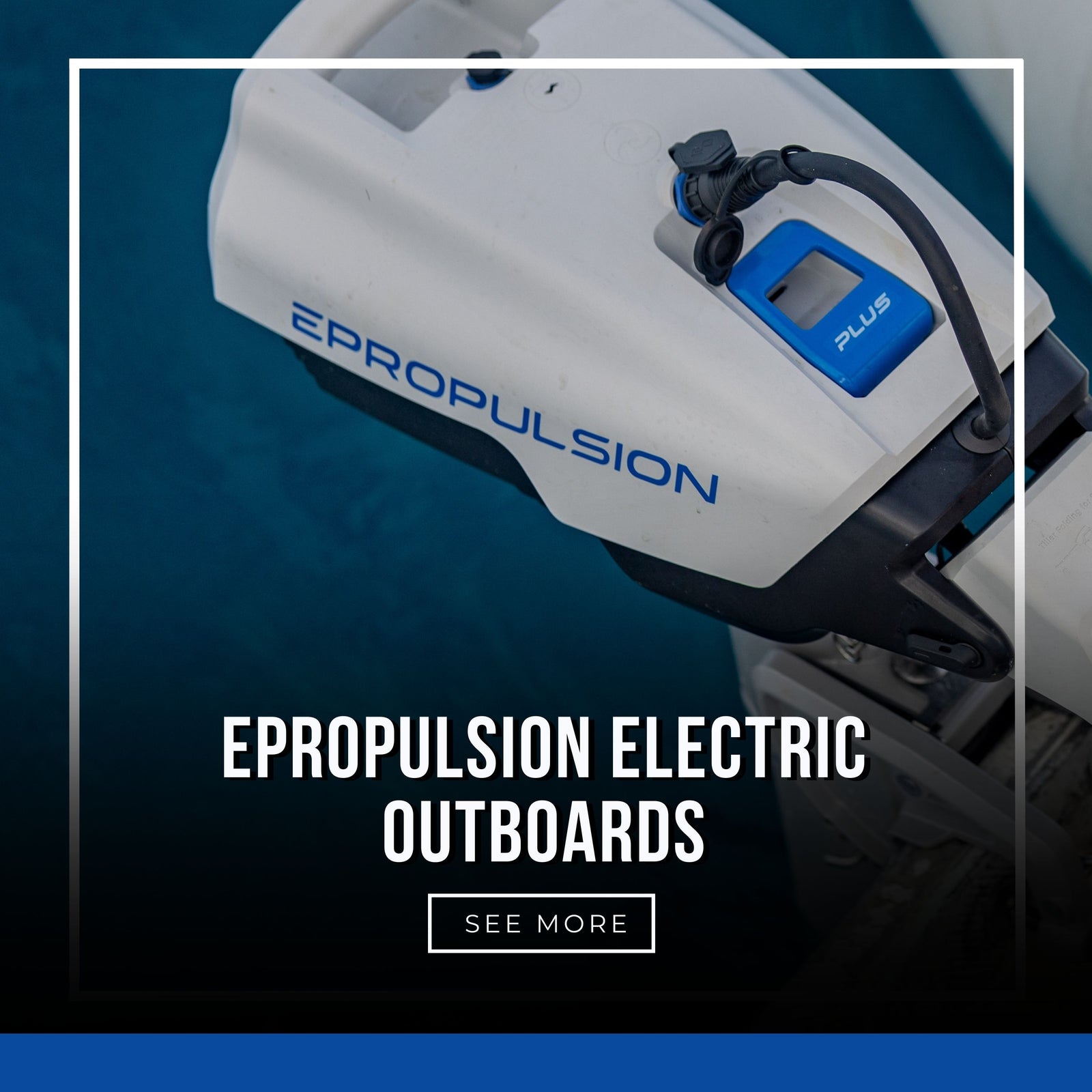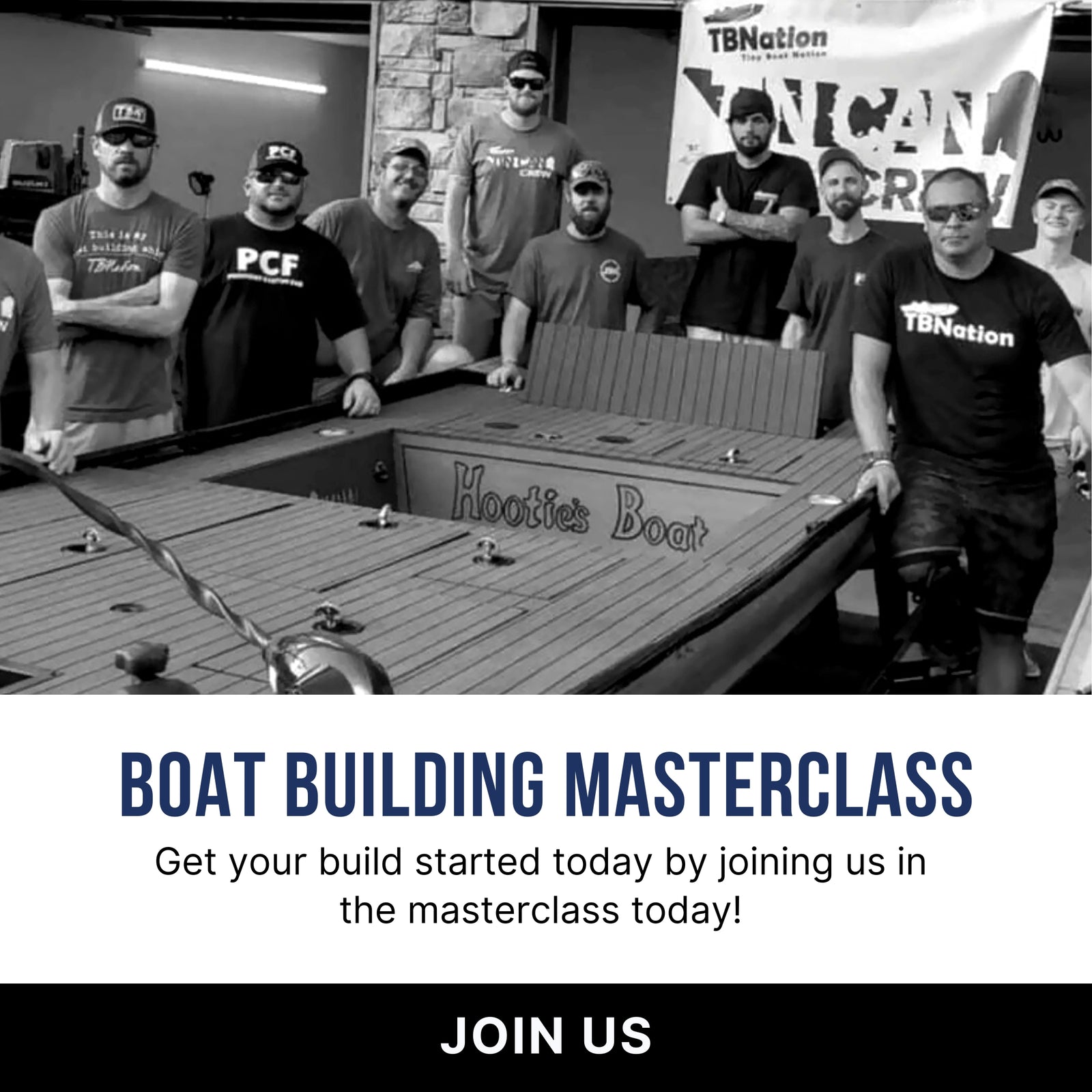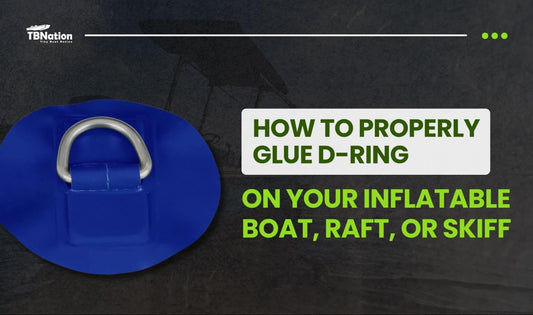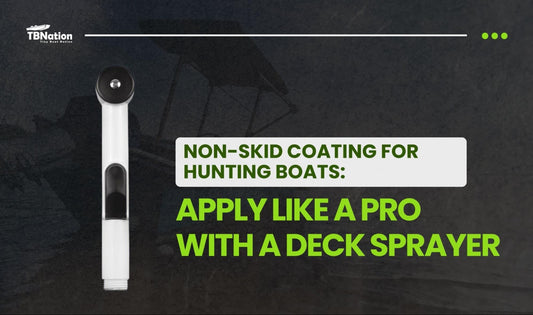Your Cart is Empty
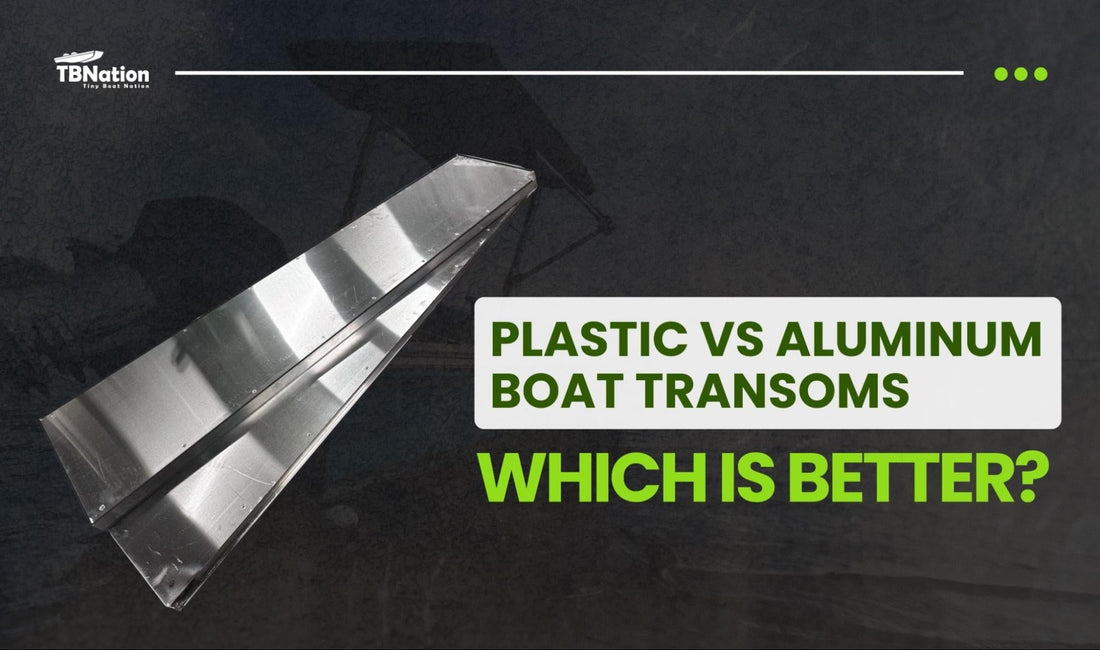
Plastic vs Aluminum Boat Transoms: Which Is Better?
Key Takeaways
-
The transom is a critical structural component of any small fishing boat or jon boat, supporting the outboard motor and absorbing wave and engine stress.
-
Aluminum transoms offer unmatched strength, rigidity, and corrosion resistance—ideal for high-performance builds or boats used in rough water.
-
Plastic and composite transoms are rot-proof, lightweight, and easy to install, making them perfect for first-time DIY builders or those seeking low maintenance.
-
Hybrid transoms (composite core with aluminum framing) combine the best of both worlds, rigidity and rot resistance, becoming a popular choice among the Tiny Boat Nation community.
-
Proper installation using backer plates, internal bracing, and marine-grade sealants is essential for transom longevity and boat safety, regardless of the material.
When upgrading or customizing a small fishing boat or jon boat, one crucial component often overlooked is the boat transoms. This structural section at the rear of the hull supports your outboard motor and absorbs the stress from waves and engine thrust. Whether you’re rebuilding an old tin boat or starting a custom project, selecting the right material for the transom is essential for safety, durability, and performance.
Historically, aluminum has been the go-to choice for transom construction. However, modern plastic and composite options are gaining popularity, especially within the DIY community and the vibrant Tiny Boat Nation following. Let’s take a closer look at these two materials and explore which might be the better fit for your next build.
What Is a Transom and Why It Matters
The transom is the flat, vertical section at the rear (stern) of the boat where the outboard motor is typically mounted. It plays a critical structural role by supporting the engine’s weight and absorbing the stress generated during acceleration and rough water conditions. Along with maintaining the shape of the hull, it also contributes to the boat’s overall rigidity. Because of this, the transom must be built with durable materials capable of withstanding both vibration and environmental exposure.
If the transom becomes weak or deteriorates over time, it can lead to serious issues like engine instability, water leaks, or even structural failure while on the water. This is especially risky when operating at higher speeds or in choppy conditions. Whether you're restoring a 12-foot jon boat or converting an old utility hull into a tournament-style bass rig, your choice of transom material directly affects performance and safety. It’s a decision that can determine how long your boat lasts and how well it handles every trip.
Plastic and Composite Transoms: Modern and Maintenance-Free
Rot-Proof and Waterproof
One of the biggest advantages of plastic composites is their complete resistance to water damage. Unlike wood, which can swell, rot, or weaken when exposed to moisture, plastic materials remain structurally sound for years. This makes them ideal for use in marine environments where water intrusion is a constant concern. Even without sealing or special coatings, they maintain their integrity over time.
Lightweight
Plastic and composite boards are much lighter than traditional wood or aluminum sheets. This weight reduction can improve a boat’s speed, handling, and overall fuel efficiency, especially on smaller watercraft. It also makes installation easier, as components are simpler to lift and maneuver into place. For shallow water builds or portable boats, the weight savings can be a major benefit.
DIY-Friendly
Plastic transoms are easier to work with than aluminum or wood, especially for beginners or solo builders. They can be cut, drilled, and shaped using standard woodworking tools, eliminating the need for welding or specialized metalworking equipment. This accessibility makes them a great choice for at-home transom replacements or full custom builds. Many DIYers appreciate the lower learning curve and faster installation process.
Corrosion-Free
Since plastic and composite materials are non-metallic, they are completely immune to rust and galvanic corrosion. This makes them an excellent choice for boats used in saltwater or humid environments where metal components typically break down over time. There’s no need for protective coatings, zinc anodes, or regular anti-corrosion maintenance. The result is a long-lasting, low-maintenance transom that can withstand harsh marine conditions with ease.
How to Choose the Right Transom Material
Stick with Aluminum
Aluminum is the most logical choice if your boat already has an aluminum hull. It offers excellent structural integrity and is particularly well-suited for mounting larger outboard motors that generate significant thrust. If you have access to welding tools or are comfortable with metalwork, aluminum allows for strong, seamless integration into your hull. It also ensures consistent thermal expansion and material compatibility, which helps prevent long-term stress on your boat’s frame. For serious anglers or those building high-performance rigs, aluminum remains a top-tier choice.
Go with Plastic or Composite
Plastic or composite materials are ideal if you’re looking for a low-maintenance, waterproof solution that’s easy to install. These materials are rot-proof, don’t corrode, and can be worked with using common tools, making them perfect for solo or first-time DIY builders. They’re especially useful for smaller boats, where keeping the overall weight down is important for speed and fuel efficiency. Because there’s no need to worry about rust or moisture damage, they provide long-term peace of mind. If convenience and durability are priorities, plastic is a smart and modern option.
Consider Hybrid Builds
Hybrid builds that combine a plastic core with aluminum framing are gaining popularity among experienced DIY boat builders. These transoms offer the best of both worlds: the lightweight, rot-proof benefits of plastic and the strength and rigidity of aluminum reinforcement. This method does require a bit more planning and skill, but it results in a transom that performs exceptionally well in a wide range of conditions. It’s an excellent solution for builders who want both durability and a custom-engineered feel. For Tiny Boat Nation-style transformations, hybrids are quickly becoming the new standard.
Think About the Environment
Your local boating environment plays a big role in determining the best transom material. In saltwater, plastic and composite materials offer a clear advantage thanks to their resistance to corrosion and low maintenance needs. Aluminum can still work in saltwater, but it requires more attention to proper grounding, coatings, and corrosion prevention techniques. In freshwater environments, either material can perform well with proper installation and upkeep. Understanding your typical conditions helps ensure your transom will last and perform without frequent repairs.
Step-by-Step Guide to Installing a Composite Transom on Your Johnboat
Step 1: Assess Your Current Transom

Start by assessing your current transom. Wooden transoms are typically budget-friendly but prone to rot, and unless fiberglassed over and sealed, they are not recommended for replacement. Aluminum transoms are durable and long-lasting but tend to be more expensive and require more work to install.
Step 2: Consider HTB Composite Transom

Consider using an HTB composite transom made from a solid block of plastic. These composite transoms are extremely rigid, rot-proof, and very durable, arguably as good as or better than aluminum. They also come at competitive prices, making them an excellent alternative.
Step 3: Prepare the HTB Composite Transom

If your old transom is still intact, use it as a template by tracing its shape directly onto the composite block. Otherwise, cut the HTB transom to your desired size using common tools such as a skill saw, Sawzall, or any plastic-cutting tool. The standard thickness should be about 1.5 inches to match most johnboats.
Step 4: Install the Finishing C-Channel

After cutting the finishing C-channel to the correct length, position it along the top edge of the transom. Ensure it fits snugly and aligns evenly for a clean, polished appearance. Secure it in place using appropriate fasteners or adhesive, depending on the material. This final touch not only enhances the look but also adds durability and a professional finish to the installation.
Step 5: Attach the Composite Transom

Attach the composite transom to your boat using stainless steel self-tapping screws. Start by drilling 1/8-inch pilot holes, then countersink them with a 3/16-inch bit, and drive the self-tappers directly into the plastic transom. Silicone is generally not needed between the transom and the hull, but seal any screw holes and the back side of the transom to prevent water intrusion.
Step 6: Understand the Material Properties

The HTB composite transom is thick, dense, and slightly heavy, but this won't noticeably affect your boat’s performance. Its high impact resistance makes it ideal for demanding marine environments. Unlike wood, it will not warp, rot, or degrade over time. This ensures long-term durability with minimal maintenance.
Step 7: Final Fixes and Moving Forward

After installing the transom, patch up any holes caused by length miscalculations and complete any remaining fixes like welding damaged parts. With the transom done, you can now move on to framing and finishing the rest of your boat build.
How to Reinforce Your Transom Correctly
Use Backer Plates
Backer plates, typically made from stainless steel or aluminum, are essential for distributing the pressure from engine mounting bolts evenly across the boat transoms. Without them, the concentrated force of the bolts can crush or damage the transom material, leading to costly repairs. Installing backer plates also helps maintain a secure engine fit, reducing vibrations and potential movement. This simple addition strengthens the mounting area and enhances overall structural integrity. It’s a small investment that makes a big difference in durability.
Install Internal Bracing
For boats with high-horsepower outboards, internal bracing inside the hull is highly recommended to prevent transom flexing or cracking. Aluminum angle brackets or composite stiffeners are commonly used to reinforce the transom from behind, providing additional strength where it’s needed most. This reinforcement absorbs and distributes engine thrust and wave impacts, protecting the transom from stress fractures. Proper bracing also improves the boat’s handling by maintaining hull rigidity. Even if your engine isn’t extremely powerful, internal braces add an extra layer of security and longevity.
Seal All Penetrations
Any hole drilled through the transom for mounting bolts or hardware is a potential entry point for water, which can damage the hull or corrode fasteners. Using marine-grade sealants around all penetrations creates a waterproof barrier that protects your boat from leaks and rust. Even materials that don’t rot, like plastic or aluminum, benefit from sealing to keep the internal structure dry and sound. This step also helps prevent vibrations from loosening bolts over time. Proper sealing is a straightforward way to avoid maintenance headaches and keep your boat performing at its best.
Aluminum Transoms: Strong and Reliable

Strength and Rigidity
Aluminum offers excellent structural integrity, which is crucial when dealing with the torque and vibration generated by powerful outboard motors. It resists flexing, even under high stress or continuous use, making it ideal for boats that operate in rough water or carry heavy loads. This strength ensures that your engine mount remains secure and your hull stays properly aligned. For performance-driven builds, especially in small watercraft, that rigidity is invaluable. Many boaters choose aluminum specifically for its unmatched reliability under pressure.
Material Compatibility
When used with aluminum hulls, aluminum transoms offer perfect material compatibility. This reduces issues related to differing expansion rates between materials, which can cause structural problems over time. It also ensures better bonding when welding or riveting components during a rebuild or upgrade. Matching materials also streamlines installation and minimizes long-term maintenance. This is especially beneficial for builders working on jon boats or small skiffs where precision and longevity matter.
Corrosion Resistance
Marine-grade aluminum is designed to withstand harsh environments, including exposure to moisture and weather changes. When properly coated or anodized, it offers excellent resistance to corrosion, making it suitable for freshwater and, with extra care, saltwater use. Unlike untreated metals, it forms a protective oxide layer that helps prevent breakdown over time. With regular maintenance and the right hardware, aluminum can last for decades without significant deterioration. It’s a trusted choice among boaters who value low-maintenance durability.
Preferred by DIY Pros
Within the Tiny Boat Nation community and other DIY boating groups, aluminum is often the material of choice for advanced custom builds. Builders appreciate its long lifespan, ease of integration with aluminum hulls, and the professional finish it provides. While it does require specialized tools for cutting or welding, experienced builders find that the effort pays off in a stronger, cleaner final product. Many successful jon boat transformations feature aluminum transoms as their foundation. For those aiming for a rugged, tournament-ready build, aluminum is a proven performer.
What Tiny Boat Nation Builders Are Doing
The Tiny Boat Nation community, known for their detailed jon boat transformations on YouTube and social media, shows a mix of approaches. Aluminum transoms remain popular for heavy-duty builds or tournament-style conversions. But many are shifting to composites for their rot-proof reliability, especially on smaller platforms under 16 feet.
Some builders are even combining the two, installing an HDPE or composite core within an aluminum outer frame to create a lightweight yet rigid hybrid transom. These hybrid approaches are becoming the new gold standard in high-end DIY builds.
If you’re new to Tiny Boat Nation, check out their YouTube channel and community forums. Many step-by-step tutorials break down transom replacement and modification in detail, including recommendations for brands like Coosa, Seaboard, and 5052 aluminum.
Final Thoughts
If you’re building or restoring a small fishing boat, choosing between plastic or aluminum boat transoms largely depends on your specific goals and level of experience. Aluminum transoms provide unmatched strength and durability, making them ideal for setups with powerful outboard engines or heavier loads.
They offer excellent rigidity and long-lasting performance, especially for those comfortable with metalworking or welding. On the other hand, plastic and composite transoms deliver maintenance-free durability and are far easier for beginners to work with. Their lightweight, rot-proof nature makes them a popular choice for small boats and DIY projects.
Whichever material you decide on, proper reinforcement and sealing are crucial to ensure your boat transoms last for years. Using backer plates, internal bracing, and marine-grade sealants will help protect your investment from stress and water intrusion. Taking these steps not only extends the life of your boat but also enhances safety and performance on the water.
With the right transom and proper care, you can enjoy smoother, more reliable boating experiences. Ultimately, understanding your boat’s needs and how you plan to use it will guide you to the best choice.
Frequently Asked Questions
1: What is a boat transom and why is it important?
The transom is the flat section at the back of the boat where the outboard motor mounts. It supports the engine and keeps the hull structurally sound, especially in rough or fast-moving water.
2: Should I choose an aluminum or plastic transom for my jon boat?
Choose aluminum for strength and durability, especially with larger motors. Go with plastic or composite for a lightweight, rot-proof, and easier-to-install option, great for DIY builds.
3: Are plastic transoms strong enough for outboard motors?
Yes, high-quality composites like HTB or Coosa are strong enough for most outboards. Just make sure to reinforce them properly with backer plates and internal bracing.
4: Can I install a composite transom myself?
Yes! Composite transoms are beginner-friendly and can be shaped with standard tools—no welding required. They're ideal for solo or DIY boat projects.
5: How do I reinforce a transom during a DIY boat build?
Use backer plates to spread out engine pressure, and add internal bracing to prevent flex. Seal all holes with marine-grade sealant to keep water out and protect the structure.
Join Our VIP List
Join the Tiny Boat Nation VIP Members List.
It's Free! Stay Up To Date With Announcements, Product Give Aways, News and Promotions.


